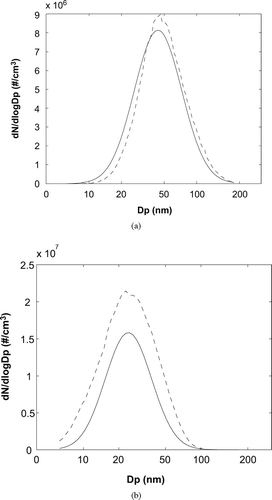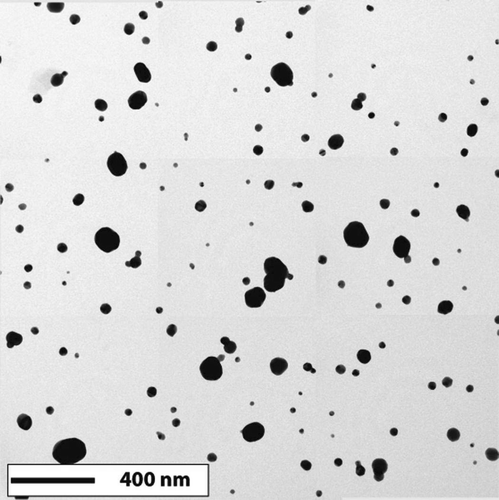Figures & data
FIG. 1 (a) Principle of the TEM-sampler: Aerosol is charged in a Hewitt-type unipolar diffusion charger. The TEM grid is placed on a grid holder to which a negative high voltage is applied. The grid is held in place with a cap (shown in black). Charged particles are deposited on the TEM grid by electrostatic force, and remaining particles are measured in an aerosol electrometer. (b) Detail view of the sampling zone.

FIG. 2 Geometry of the Sampler and flow streamlines. The geometry has a rotational symmetry around the axis x = 0 mm. The TEM grid is placed on the grid holder in the y = 0 mm plane, and held in place by the cap (shown in black). The thick line is the trajectory of a particle of 50 nm diameter with one elementary charge released at r = Rc.
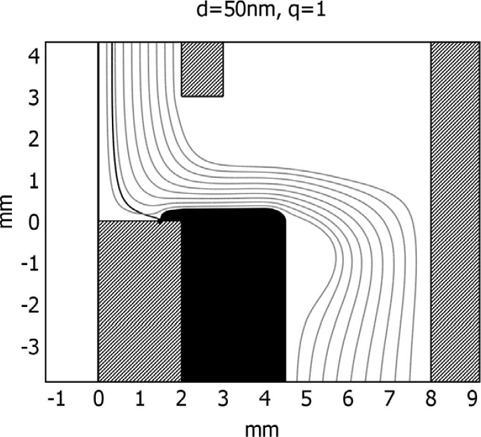
TABLE 1 Sampling efficiency for different particle diameters and number of charges. For larger particles and small charge levels, the efficiency was not computed, since these charge levels are unlikely for our charger
TABLE 2 Measured average charge per particle, calculated and measured sampling efficiency
FIG. 3 Particle trajectories and equipotential lines of the electric potential. Deposition of 50 nm particles released at starting points r = i*r0, i = 0 …10 is uniform on the substrate.
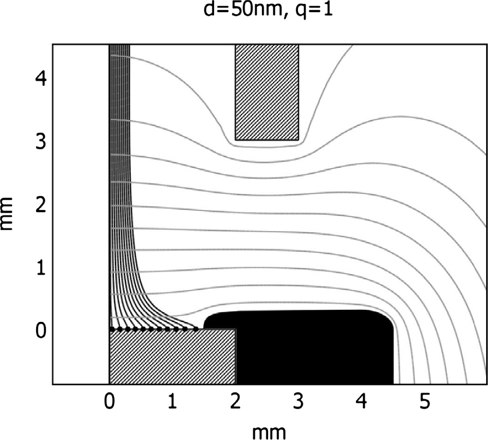
FIG. 4 Particles with a diameter of 5 nm are focused on the center of the TEM grid. The cones represent the velocity field of the gas flow.
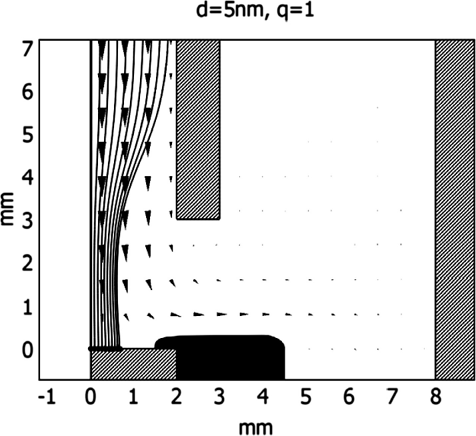
FIG. 5 Profile through a TEM grid. The stars indicate the number of particles detected on the corresponding mesh. The x-axis corresponds to the location of the profile. The numbers indicate the meshes on which the particles have been counted. A part of the grid is covered by the grid holder.
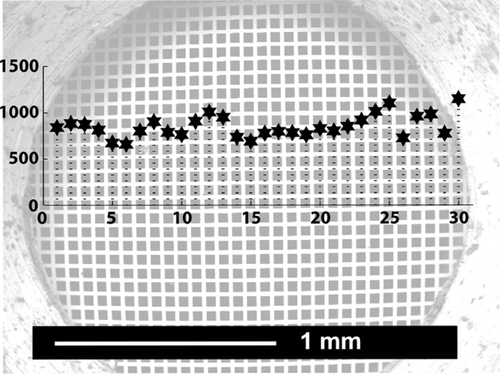
FIG. 6 Experimental setup for the generation of polydisperse (left) and monodisperse (right) aerosols.
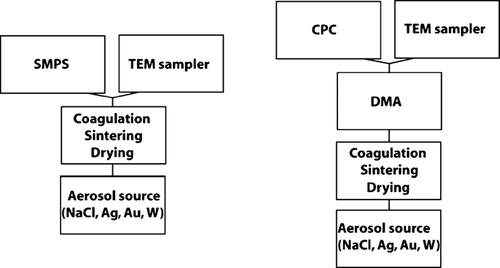
FIG. 8 Calibration curve for the TEM sampler covering the size range from 20–320 nm. Crosses: measurements; circles: mean of measurements for a given size; stars: model calculations.
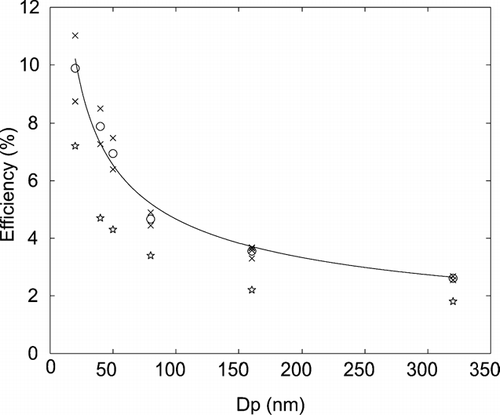
FIG. 9 (a) Comparison of SMPS measurements with results derived from TEM-IA for polydisperse Ag particles. Dashed line: SMPS measurements (N = 4.5 × 106 particles/cm3, geometric mean = 47.7 nm). Solid line: TEM-IA results (N = 4.6 × 106 particles/cm3, geometric mean = 43.7 nm). (b) Comparison of SMPS measurements with results derived from TEM-IA for polydisperse Au particles. Dashed line: SMPS measurements (N = 1.3 × 107 particles/cm3, geometric mean = 23.8 nm). Solid line: TEM-IA results (N = 7.9 × 106 particles/cm3, geometric mean = 24.1 nm).
